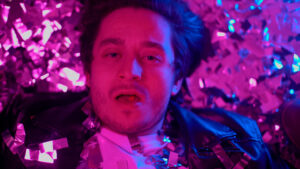MDMA, most commonly known as ecstasy, is a synthetic methamphetamine that speeds up the brain and body’s heart rate, metabolism, breathing, and dopamine levels. While ecstasy is popular on the party scene, it can be dangerous and addictive. Unfortunately, party drugs are often considered safer or less addictive than other illicit drugs. Ecstasy addiction can be just as common as other illicit substance use disorders. Ecstasy abuse can lead to withdrawal. Understanding the symptoms and effects of ecstasy withdrawal can help you know when it’s time to seek treatment.
If you or someone you love in the LGBTQ community is looking for ecstasy addiction treatment in Hollywood, California, we can help. La Fuente Hollywood Treatment Center provides cutting-edge dual diagnosis treatment for the LGBTQ community. Our residential, outpatient, and sober living homes support every stage of drug and alcohol recovery. Call us now at888.903.9898 to learn more about our ecstasy treatment center in California.
Effects of Ecstasy
When ecstasy enters the bloodstream, it raises dopamine levels. While the brain makes small levels of dopamine every day, the brain and body can start to crave more because it causes euphoria, joy, and inflated confidence. This is called the “dopamine reward effect.” Dopamine can often be a leading cause of developing a substance use disorder. MDMA can further raise dopamine levels when someone is exposed to flashing lights, music, or becomes physically active while high. Side effects of ecstasy use include:
- Weight loss
- Insomnia
- Lack of appetite
- Hallucinations
- Tremors and shaking
- Sweating
- Changes in behavior
When ecstasy wears off, someone experiences a “come down.” This can be a painful process as the body re-regulates and slows down. This is not the same as ecstasy withdrawal.
Ecstasy Withdrawl Effects
Addiction occurs when the brain relies on a substance for certain chemicals. When someone’s brain relies on ecstasy for dopamine and other pleasurable effects, they will experience withdrawal when ecstasy leaves their bloodstream. This is a natural response to chemical dependence. Ecstasy withdrawal symptoms can include the following:
- Intense cravings
- Drug-seeking behavior
- Changes in sleep patterns
- Tremors and shaking
- Sweating
- Changes in behavior
- Mood swings
- Changes in breath and body odor
- Aggression
- Unexplained anger
- Insomnia
- Lack of appetite
- Anxiety
- Depression
- Fatigue
- Brain swelling
- Panic attacks
- Irregular heartbeat
- Trouble concentrating
For someone with a co-occurring disorder like depression, anxiety, or ADHD, managing ecstasy withdrawal can be more difficult. During withdrawal, people are often confused and irrational and can become a danger to themselves or others. Working with an ecstasy treatment center can be the safest way to lessen withdrawal effects and prevent future health problems.
Get the Support You Need With an Ecstasy Center in California
Unfortunately, like many drugs, ecstasy disproportionately affects the LGBTQ community. It can also be harder for members of the community to find safe and inclusive treatment. At La Fuente, we’re here to change addiction treatment for the LGBTQ community and help the community heal together.
Our Southern California party drug detox and rehab center provides an inclusive space for LGBTQ community members to experience comprehensive dual-diagnosis treatment for party drugs, alcohol, and other addictive substances. Our clinicians help clients uncover the root causes of party drug abuse and addiction in a safe community. Many of our clinicians are in recovery and understand the recovery process first-hand. With residential, outpatient, and sober living options in Hollywood, CA, we have a program for you, no matter where you are in your recovery.
Learn More About Withdrawal and Ecstasy
If you’re ready to learn more about ecstasy withdrawal and the signs of ecstasy addiction, we can help. Call us at 888.903.9898 or reach out online to speak with our team and get started with treatment today.



